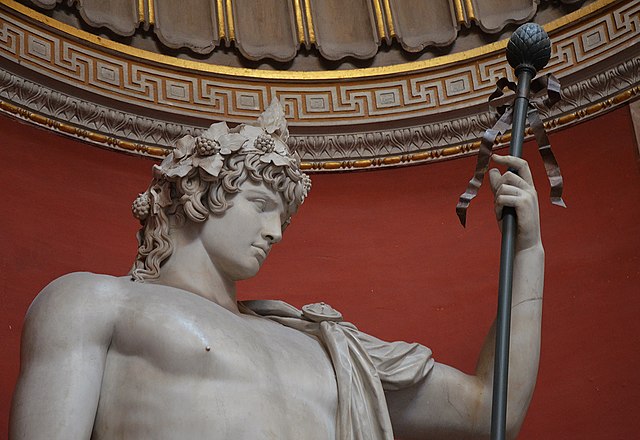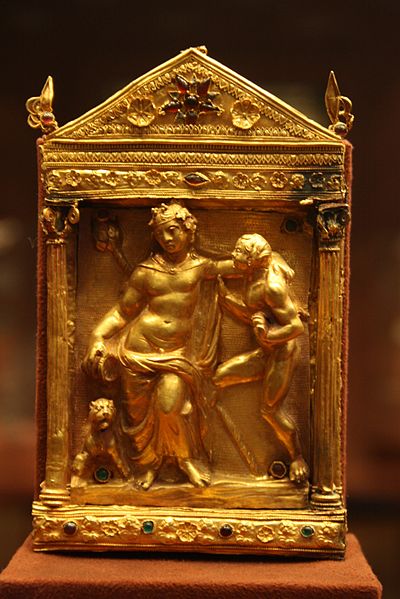In Ancient Greece a thyrsus or thyrsos was a wand or staff of giant fennel covered with ivy vines and leaves, sometimes wound with taeniae and topped with a pine cone, artichoke, fennel, or by a bunch of vine-leaves and grapes or ivy-leaves and berries, carried during Hellenic festivals and religious ceremonies. The thyrsus is typically associated with the Greek god Dionysus, and represents a symbol of prosperity, fertility, and hedonism similarly to Dionysus.
Antinous holding the thyrsus while posed as Dionysus (Museo Pio-Clementino)
Thyrsus staff tied with taenia and topped with a pine cone
A Maenad using her thyrsos to ward off a Satyr, Attic red-figure kylix, c. 480 BC
Roman relief showing a Maenad holding a thyrsus, 120–140 AD. Prado Museum, Madrid.
In ancient Greek religion and myth, Dionysus is the god of wine-making, orchards and fruit, vegetation, fertility, festivity, insanity, ritual madness, religious ecstasy, and theatre. He was also known as Bacchus by the Greeks for a frenzy he is said to induce called baccheia. As Dionysus Eleutherius, his wine, music, and ecstatic dance free his followers from self-conscious fear and care, and subvert the oppressive restraints of the powerful. His thyrsus, a fennel-stem sceptre, sometimes wound with ivy and dripping with honey, is both a beneficent wand and a weapon used to destroy those who oppose his cult and the freedoms he represents. Those who partake of his mysteries are believed to become possessed and empowered by the god himself.
Second-century Roman statue of Dionysus, after a Hellenistic model (ex-coll. Cardinal Richelieu, Louvre).
Dionysus extending a drinking cup (kantharos) (late sixth century BC)
Dionysus triumph, a mosaic from the House of Poseidon, Zeugma Mosaic Museum.
Golden naiskos with Dionysus, 2nd cent. BC.








